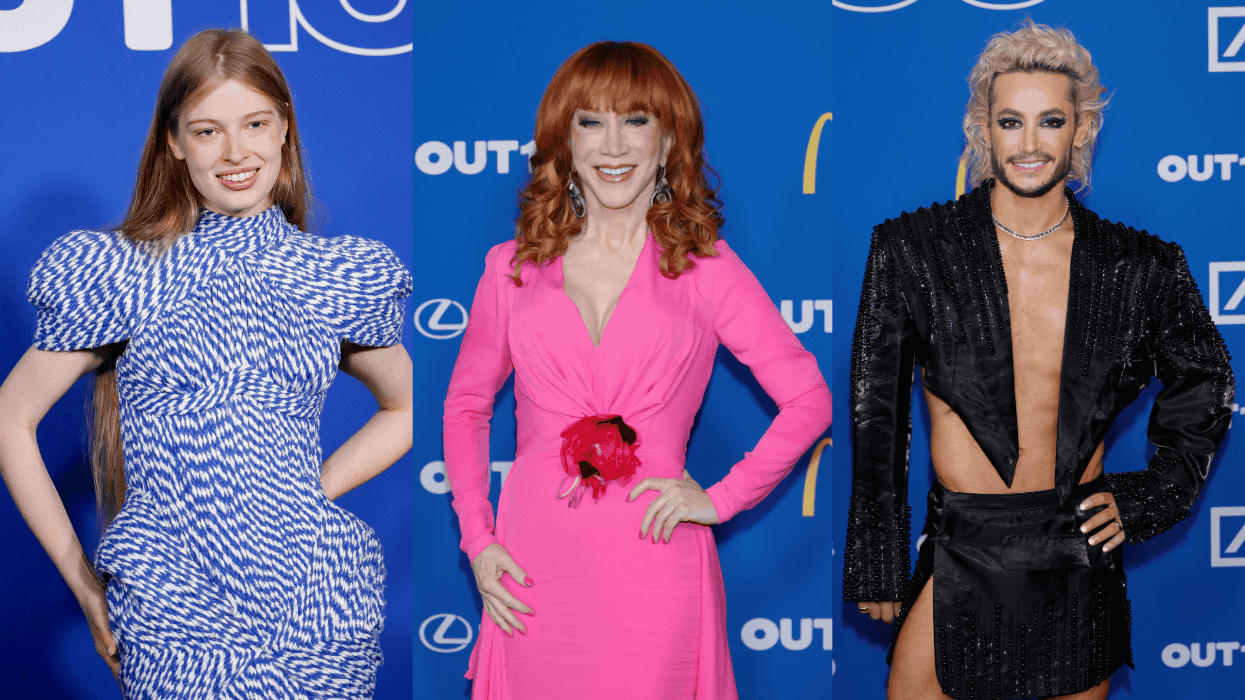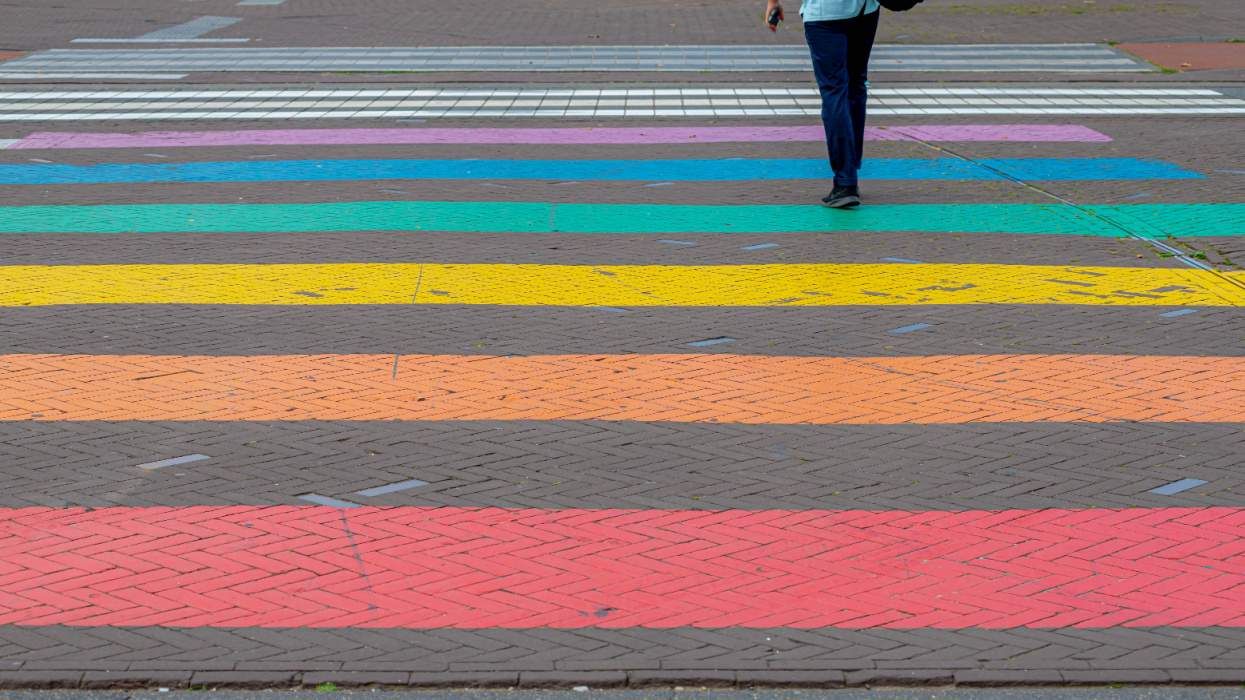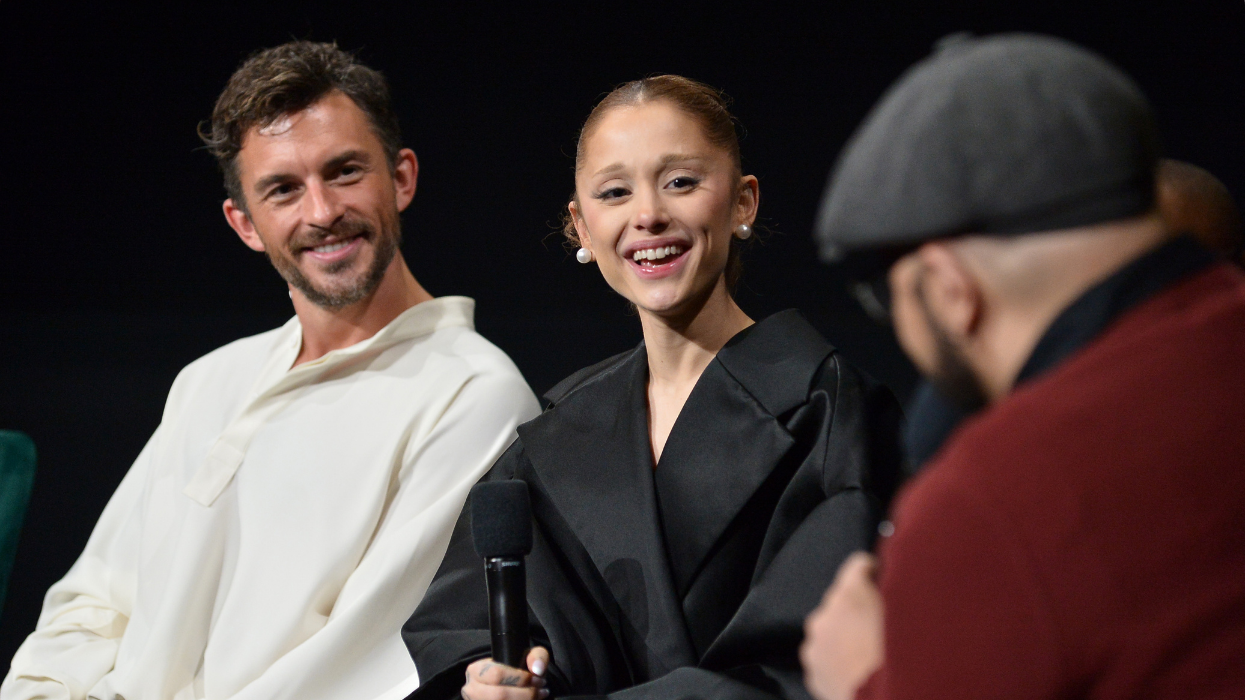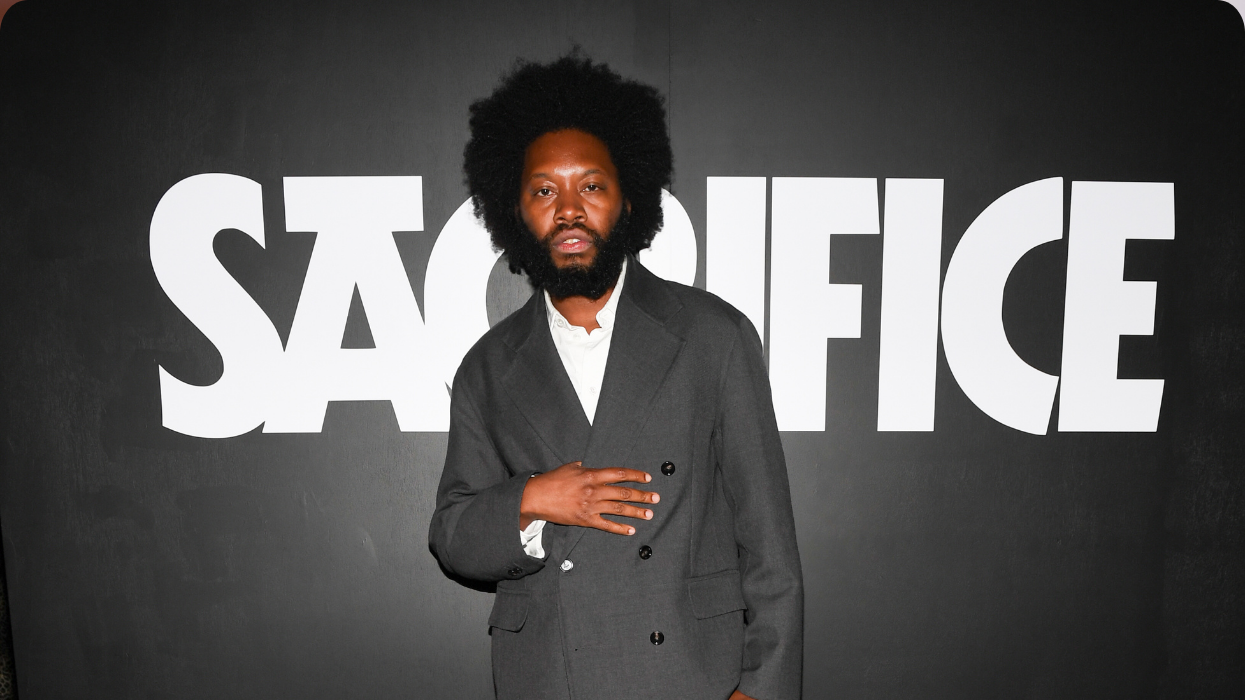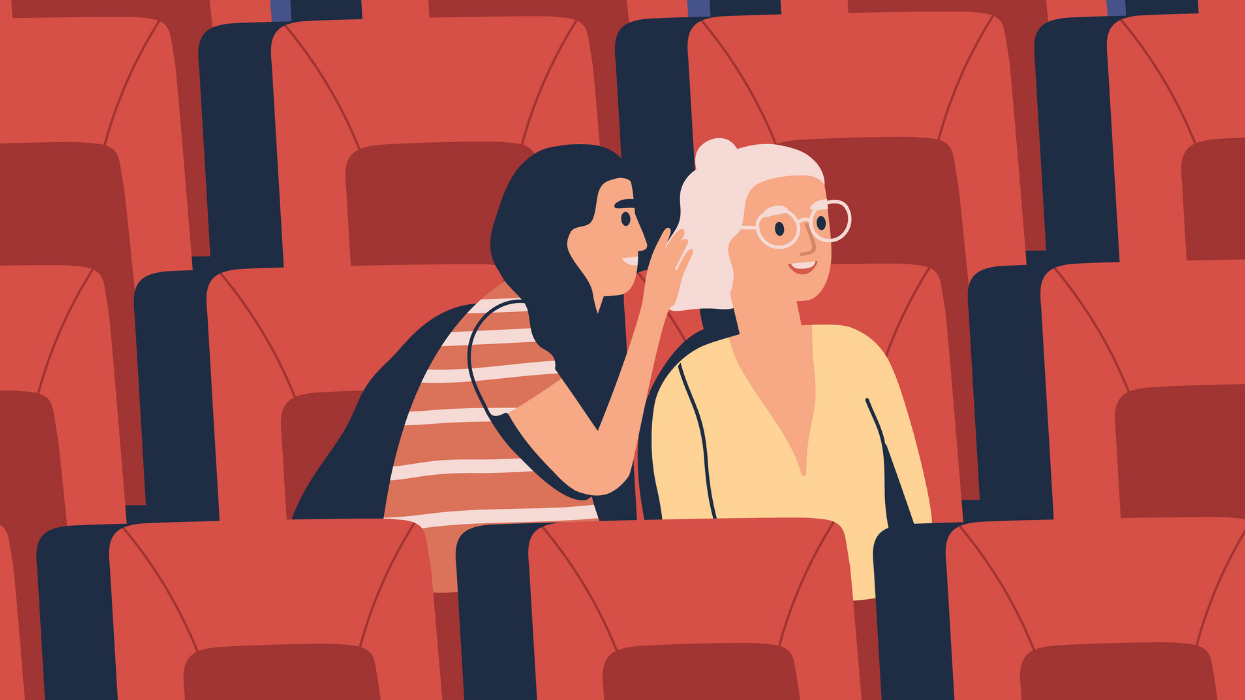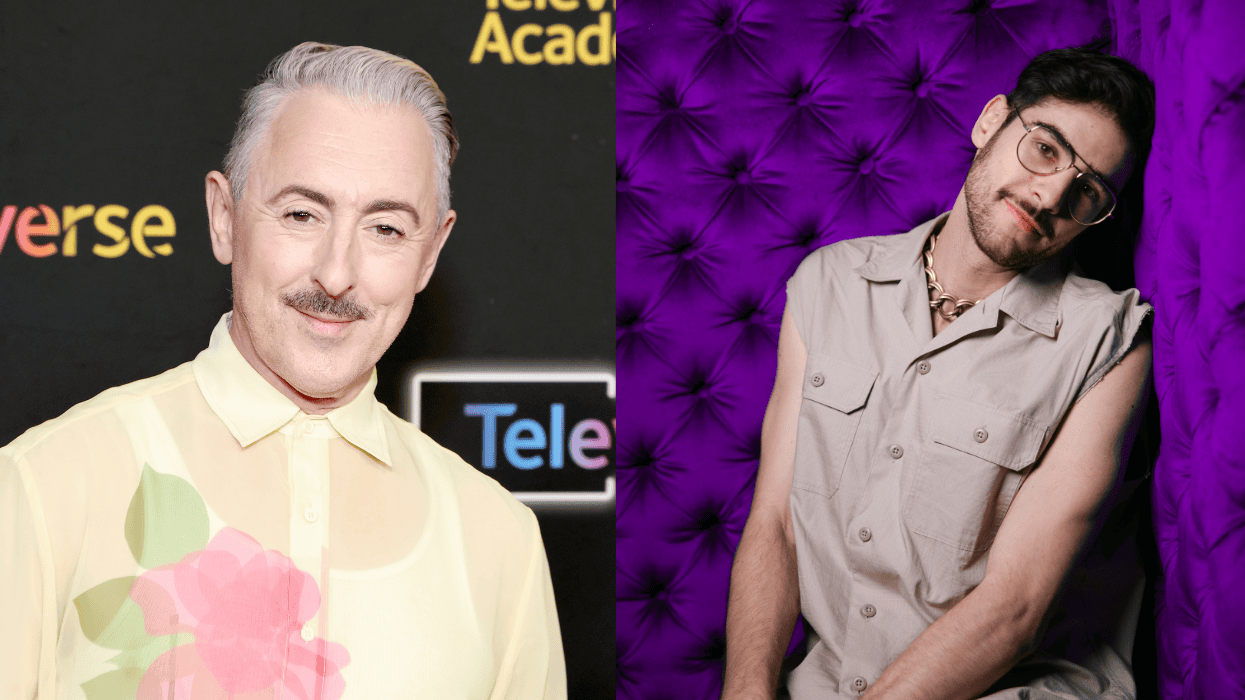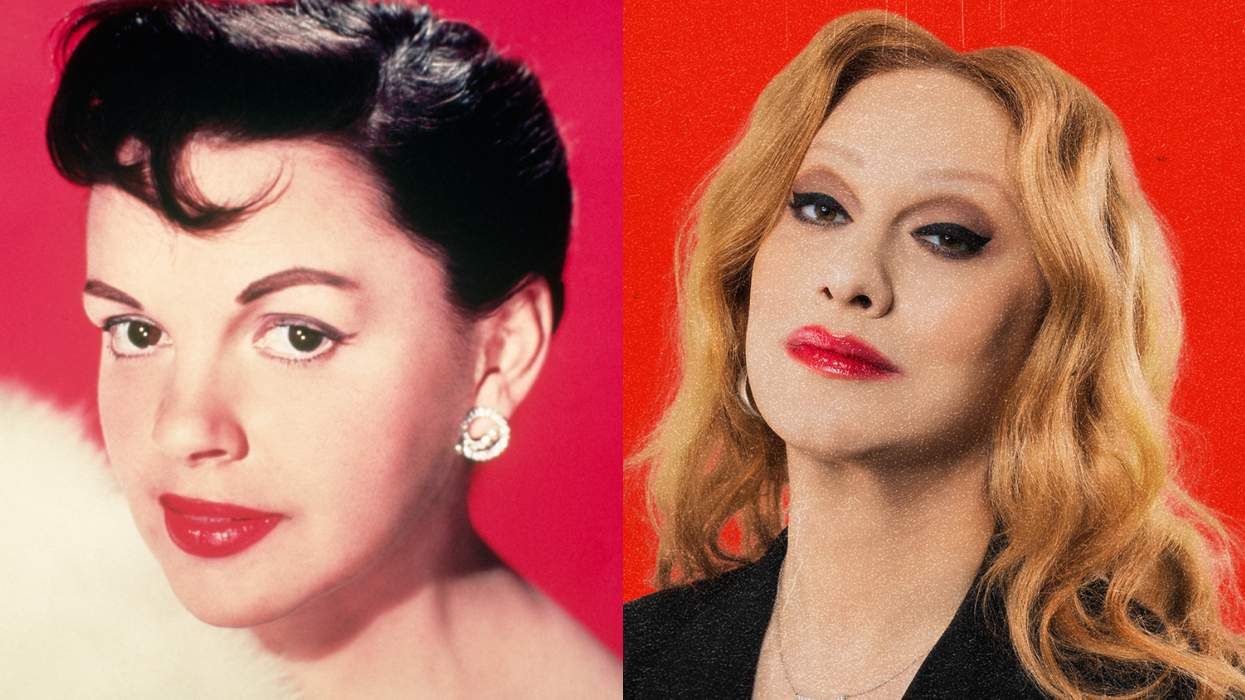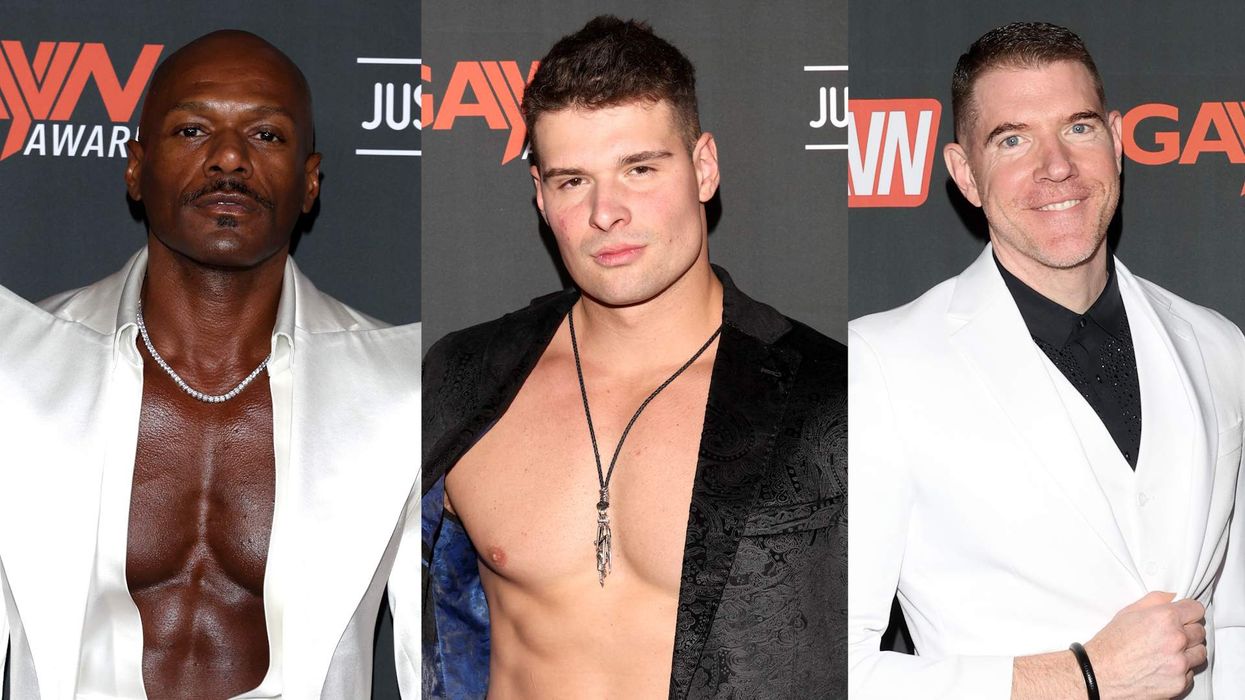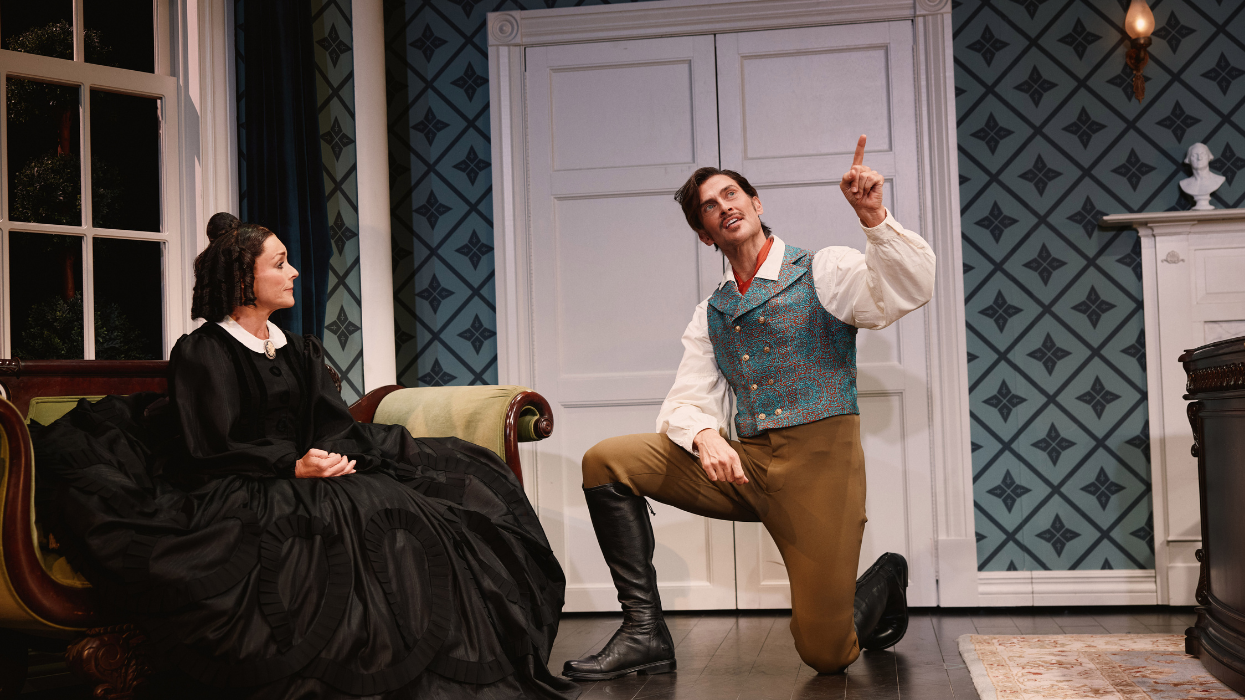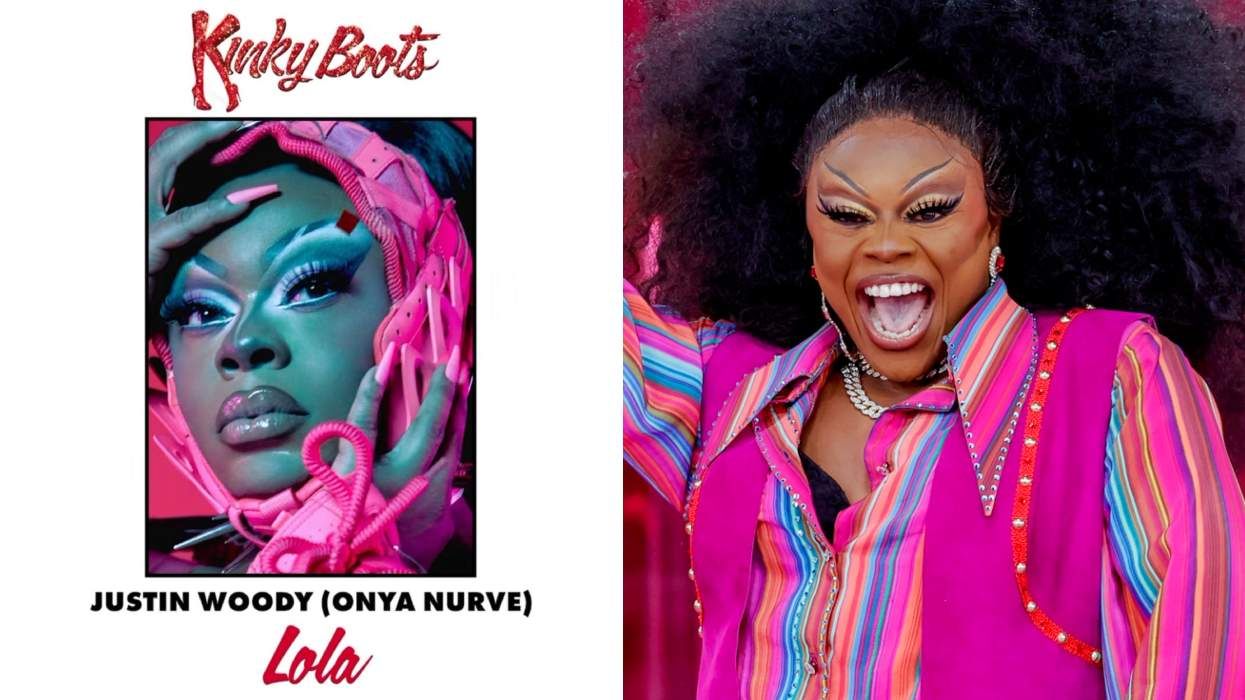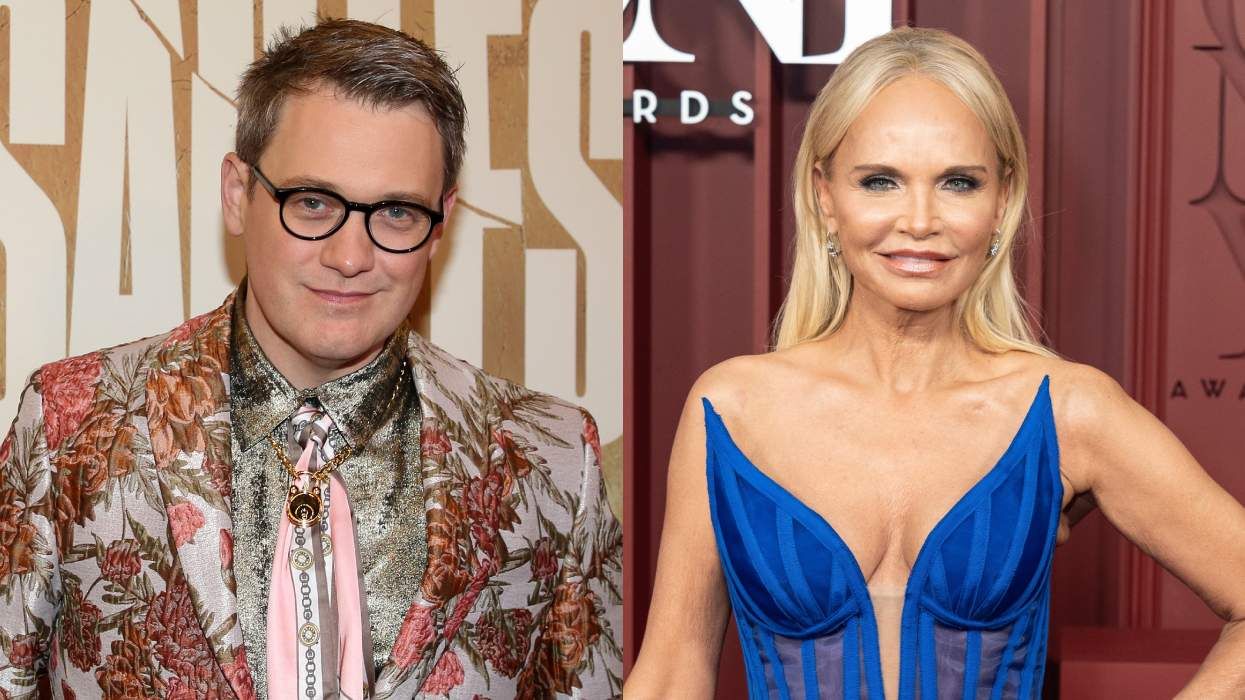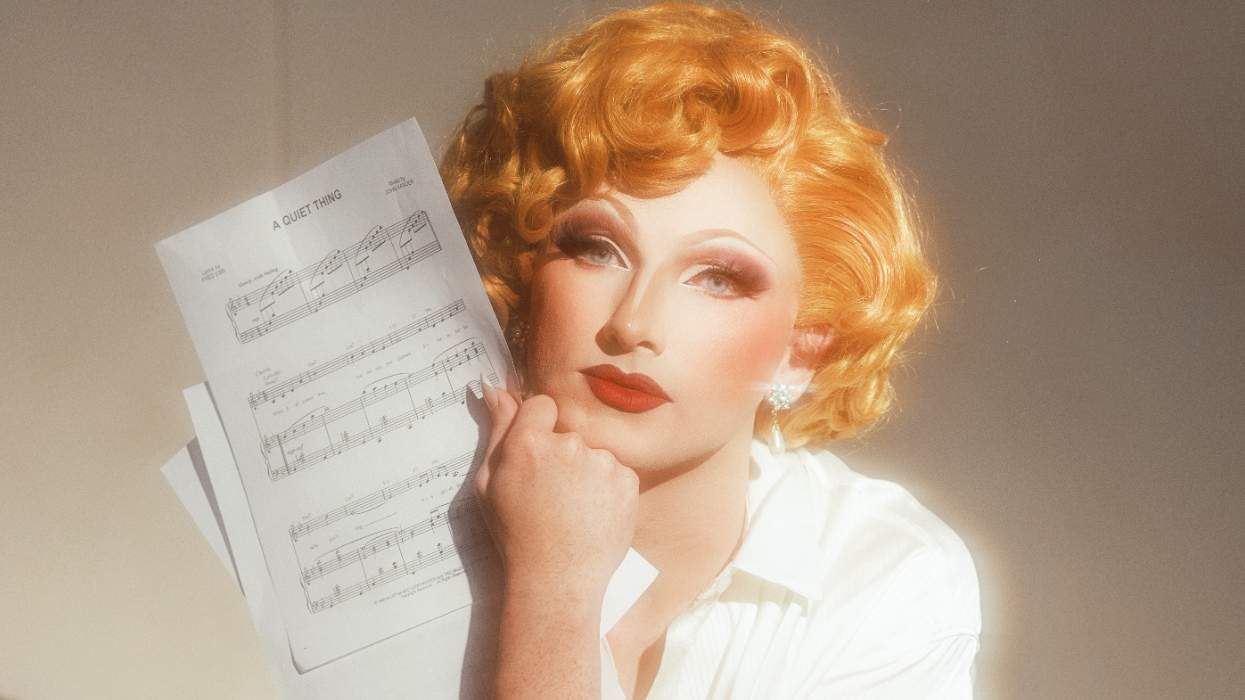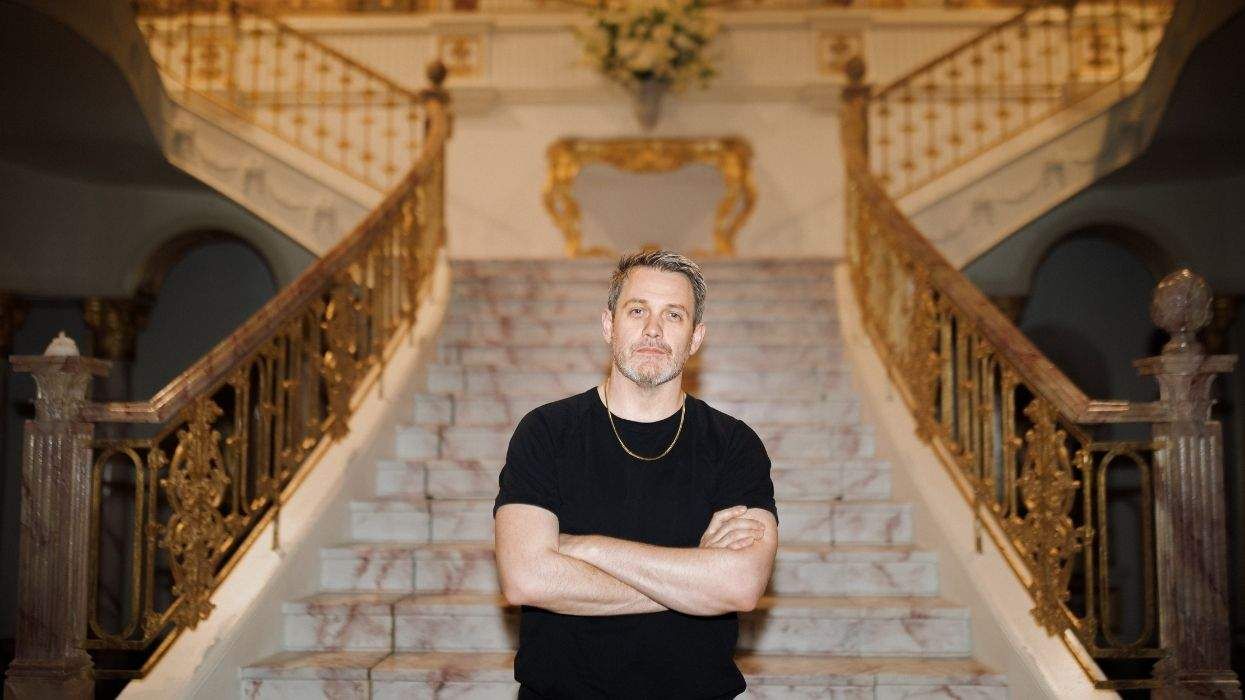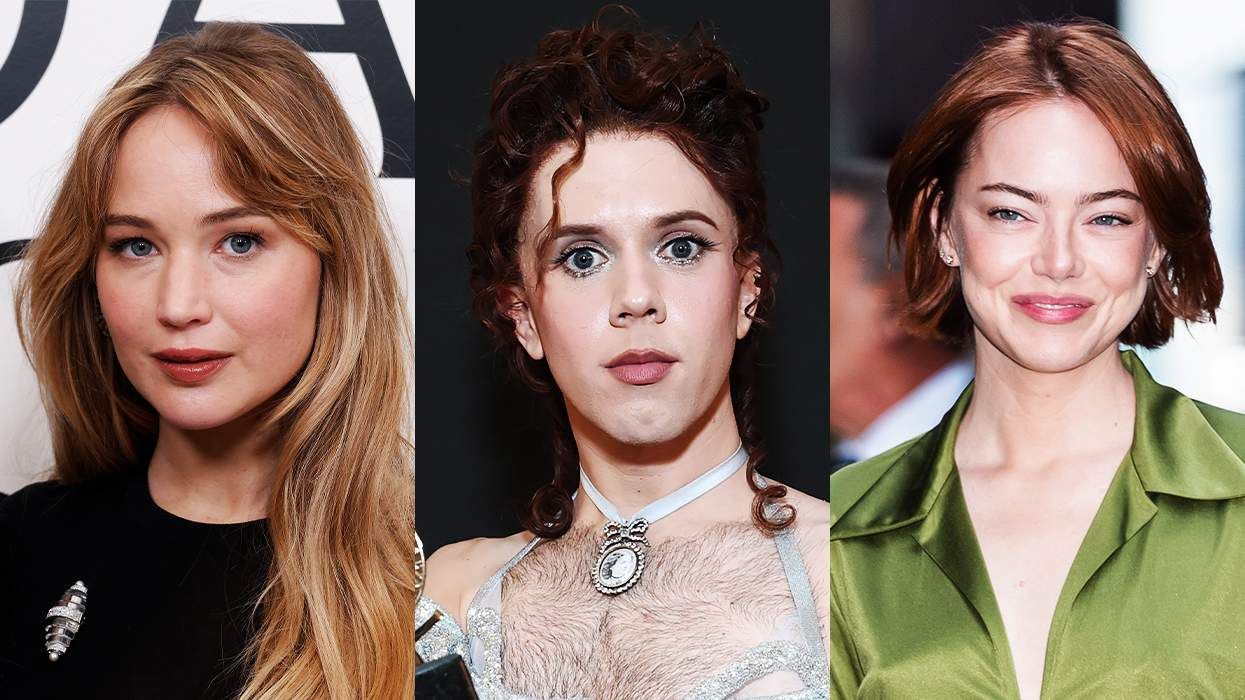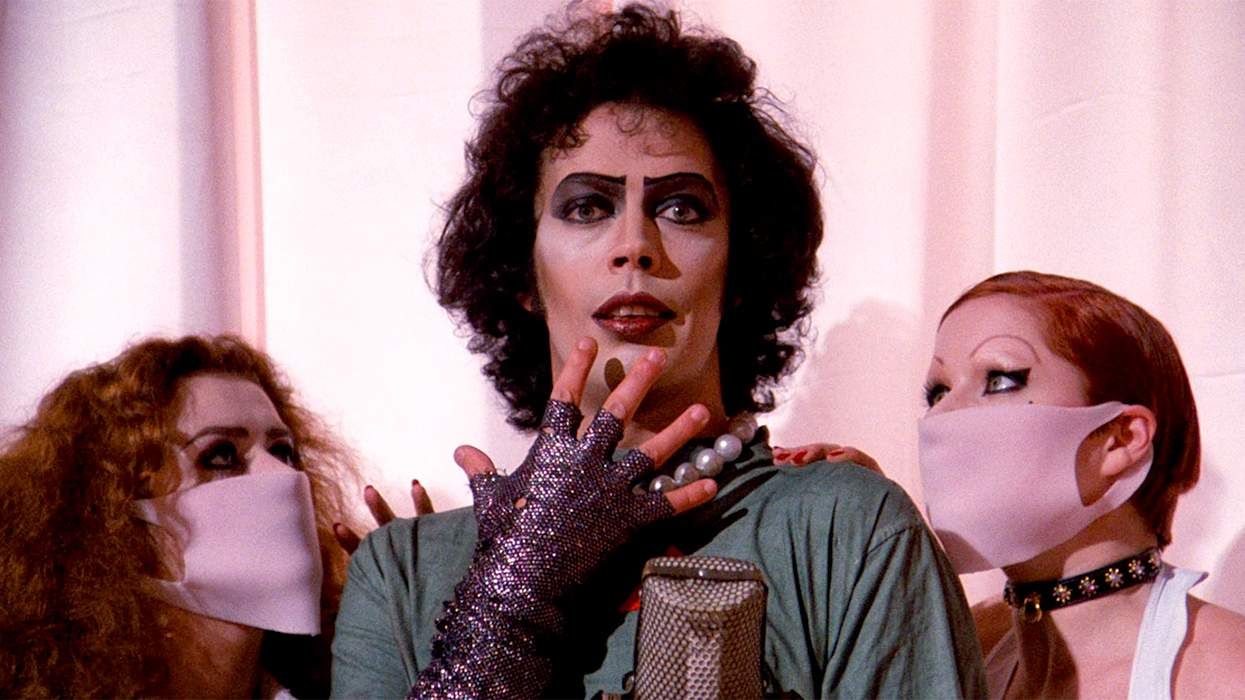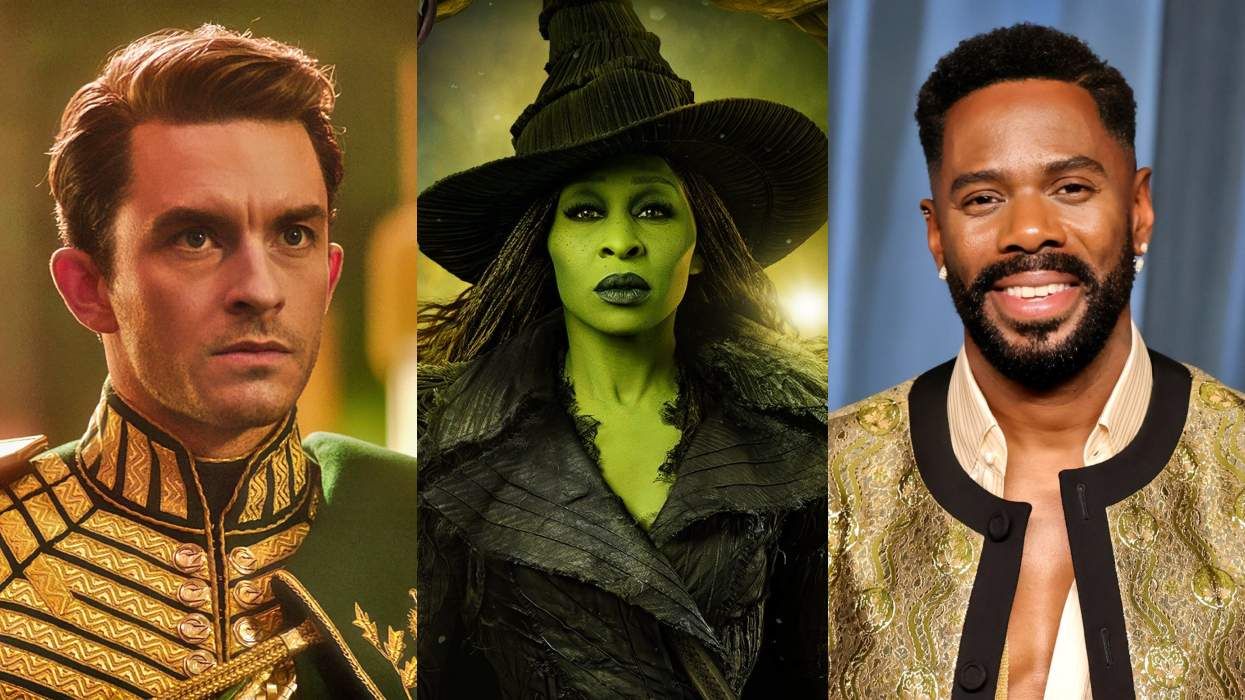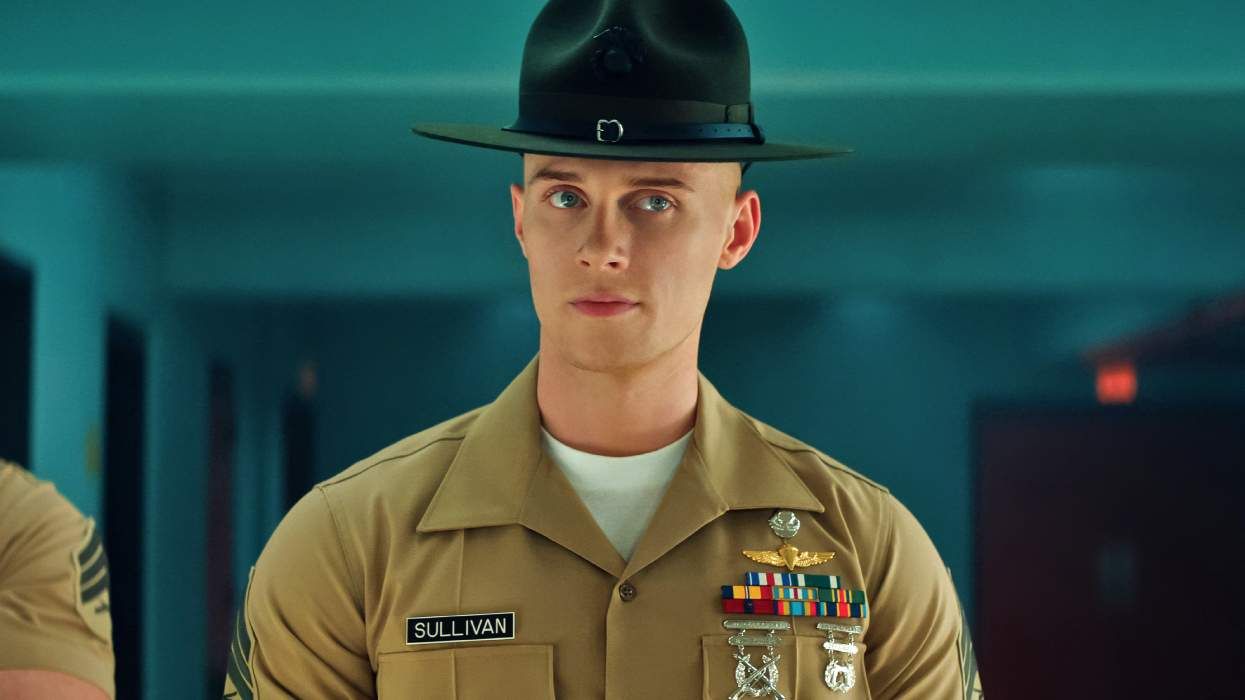What's funny about the criticisms following Hannah Gadsby's latest show Douglas is that she prophesied most of them, to a tee, at the top of the show itself.
In its New York premiere on Wednesday, the Off-Broadway 5-week run of the hour-45-minute standup(ish) set from the 41-year-old Australian Out 100 honoree follows up the global success of her 2018 Netflix special Nanette, which snagged her a Peabody, inked her a book deal, and to be honest, disrupted the idea of standup.
The controversy following Nanette was a consequence of a few things, depending on who you ask. Some critics would say that the show, in toeing the lines between performance art and traditional standup, subverted the industry form, and by proxy, insulted it. Others would say that Nanette, a startlingly sincere diatribe against straight, white men with an observation that a career's worth of self-deprecating jokes in standup were the product of kyriarchal structures and male-influenced self-hate, paved the way for a new era of comedy that would encourage women, queer people, and others on the margins to create art without helping the patriarchy's cause.
According to Gadsby herself, as she noted in Douglas' opening bits, criticisms often had to do with her appearance -- complaints on the fact that she was too man-like, too heavy, too off-putting, or as put by some with more subtle awfulness, "rubenesque." But appearance aside, the predominant issue people had with the show (which was typically pointed out, to her face, almost entirely by men, according to Gadbsy) was in its categorization, and the expectations that came with that.
On Netflix, Nanette was billed as a standup performance, so perhaps you would expect punchlines every 30 seconds, or more. About halfway through, however, the "laugh tap" is very abruptly turned off, and she delves into what many men insisted was not comedy but a "monologue" or even a "lecture" about the ways marginalized people might minstrelize their trauma to protect or advance their art. These expectations, she said, whether of her appearance or of her art's form, are an invention of men, almost exclusively for women (and though Gadbsy made no nod to nonbinary folks, she should include them in that as well). She also said at the top of Douglas that it would be a lot of the same thing, and predicts that "the haters" would probably not like this show very much either, for the same reasons.
But if you really want to call it a lecture, Gadbsy jested, then a lecture you'll get. And on that note, she pulled out a slideshow clicker to reveal a Renaissance painting, the first of many in a lecture-like presentation. The comedic effect of that moment was enigmatic and unexpected, as she had previously lied to the audience and told them that the projector was only for a photo of her dog, after whom the show is, in part, named (the other part, after the Pouch of Douglas, a space between a one's rectum and the posterior wall of the uterus "discovered" by an 18th century male physician, named Douglas).
Her slideshow panned through paintings in Renaissance-era art history, which Gadsby studied, with commentary on the patriarchal supremacy of the canon and the ways men name things. Men who were the arbiters of their culture at the time created further expectations, perceptions, and perceived behaviors about women without really including women in the conversation itself, as Gadbsy observes, to an asinine degree (just as in the case of the Pouch of Douglas). With whip-fast observations and comedic precision, by the time Gadbsy finished her use of the slideshow, I was in tears laughing.
But the slideshow was simply easy, sweet white bread around the juicier Gadbsian meat of Douglas. Gadbsy introduces a bit about the use of the term "hormonal," which she has dubbed a term used for when a woman does anything a man failed to predict. (The term has no male equivalent.)
Toward the middle of the show, we learn that Gadsby has autism. Though there is no shortage of jokes about her neurological variance, the stories surrounding her experience as a person with autism are largely sincere. One of the stories details an episode (one might call "hormonal," perhaps) where she breaks down in front of an ex. After the breakdown is over, the ex texts Gadsby on accident, intending it for a group chat, referring to her as "retarded." It is a shocking moment -- one invoking an audience-wide gasp. This anecdote goes on to illustrate a point that queer people can hurt other queer people, and that that hurt is a product of expectations we have surrounding people living with disabilities, again invented and named by men.
Following the performance, a circulating review of Douglas by The New Yorker's theatre critic (and brilliant essayist) Hilton Als provided some sharp criticisms, calling it "a revenge fantasy you pay for," "a party out of self-absorption," and "solipsism masquerad[ing] as art."
His main critique takes issue with the lack of specificity Gadbsy employs in addressing the problem of the patriarchy and the lives of queer or marginalized people, calling it "an emotional chokehold" that corners the predominantly white audience into enemizing a cultural straw man -- the straight, white man. He also dubs Gadsby a "monologuist," and later, goes on to question the truthfulness of Gadbsy's traumatic story during this heartbreaking moment of her relationship. Als concludes his argument by wielding Michelle Obama's mantra, "when they go low, we go high," emploring for "a modicum of care and grace."
Some (idiotic) criticisms of Als' piece on Twitter presumed he was the very "straight, white man" Gadbsy was talking about (Als is Black and queer), and the internet attempted to tear his critique down that way. In a way, this proves Als' point true -- many people on the internet are blinded by the idea of the enemy, without any real attempt to concretize who that enemy might be. In an era of virtue signaling, queer white people seek to hold a veil in front of their own whiteness by attacking the only member above them in the dangerous animal kingdom of privilege -- a straight, white person, which Als is not.
And I have to agree with Als on that point. These days, it is too easy to point a finger (a white finger, or a cis finger, especially) at some Boogeyman in the abyss and blame "the patriarchy" for our problems without further exactitude or self-analysis. Gadsby's failure to discuss her own whiteness with nuance was the show's greatest blindspot.
But as an Als fan, it was a bit of a bummer to watch him question her very career path, the truthfulness of her story, and its place in the world of art -- all of which were criticisms predicted by Gadbsy at the top of the show. Many of his criticisms, from his plea for "care and grace," to the deeming of Gadbsy's tactics as "emotional," sounded an awful lot like the very male expectations of propriety Douglas observed and illustrated many times. What was more disappointing, though, was Als' failure to discuss ableism, or autism at all, really.
"Isn't it a performer's moral responsibility to instill in us, directly or indirectly, a sense that we can all be bigger and freer than our individual narratives?" wrote Als, another expectation, perhaps one made by men when art itself was canonized and standardized without any discussion of how disability might exist in those canons.
"I saw both Hannah Gadsby's Douglas and read Hilton Als' review last night so I feel more caught up," author and journalist Meredith Talusan wrote on Twitter. "fwiw I thought the review made a ton of incisive points but also led me to wonder how neurotypical artistic norms should view an autistic person's lack of emotional subtlety."
Other critics like myself notice that watching someone in comedy create work around disability is revolutionary, and we should name it as such when critiquing it. As Gadsby said in the show, ableism is a product of the patriarchy, and labels for neurodiversity are more often than not created by men, especially when women do something they fail to predict (see also: "hormonal," "hysteria," etc.).
"The expectations that we place on humans are inhumane," Gadbsy said herself, addressing her autism diagnosis in Douglas. "Autism is something that happens around other people. We're fine on our own," in art spaces and personal spaces. Whether you are a straight, white man sitting in the audience, a neurotypical critic writing about the show later, or an 18th century physician named Douglas, what's true for everyone is that our canon-creators have yet to figure out just how to criticize it -- or, for that matter, how to name it -- and perhaps that is the show's greatest power.
Douglas is playing at the Daryl Roth Theater in New York through August 24th.



